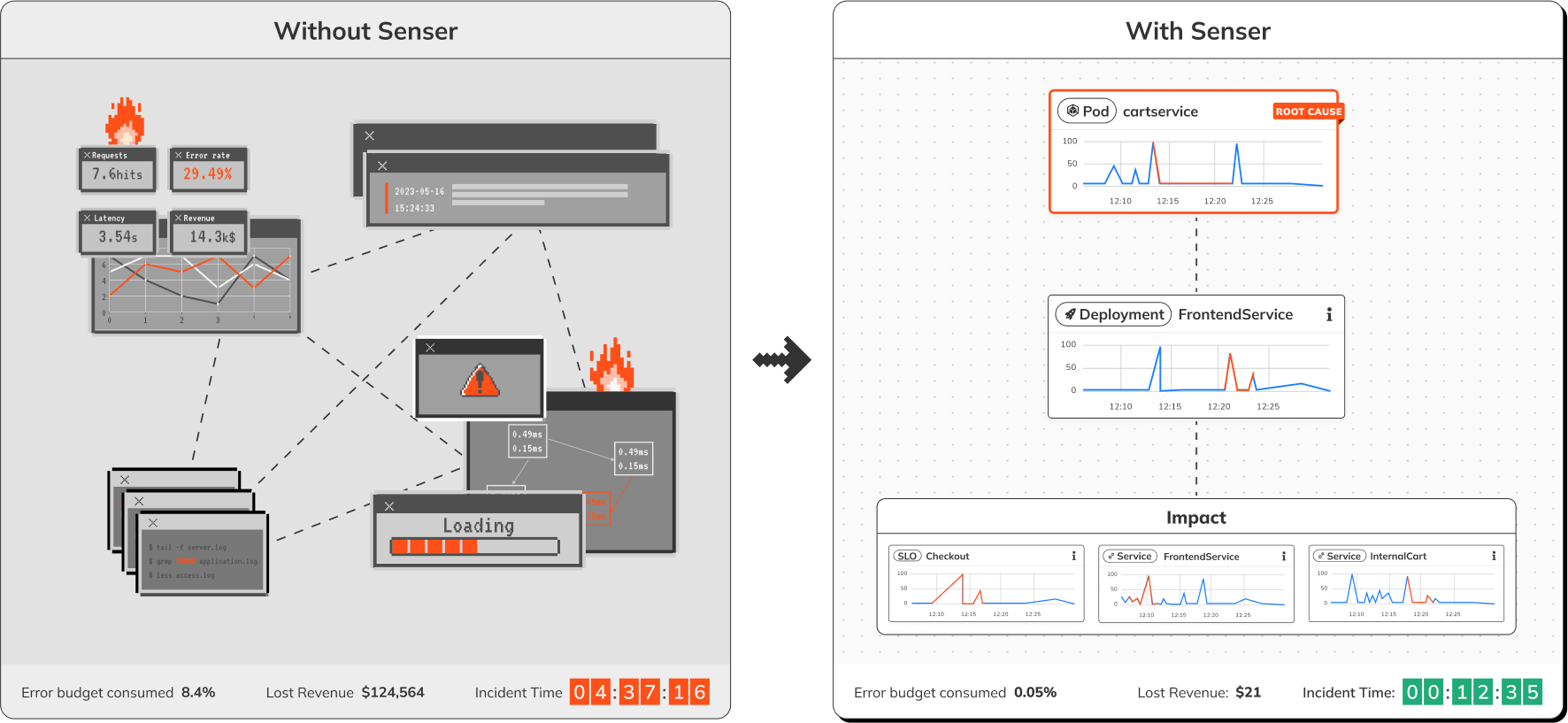 APPS
APPS
 APPS
APPS
 APPS
APPS
Artificial intelligence-powered infrastructure monitoring startup Senser Ltd. said today it has closed on a $9.5 million seed funding round.
The funds will be used to launch its new AI operations platform, which uses Extended Berkeley Packet Filter technology to monitor complex cloud and on-premises information technology environments. Today’s round was led by Eclipse and saw participation from Amdocs and a number of private investors, the startup said.
EBPF is a technology that makes it possible to run special programs deep inside the Linux operating system in an isolated way. As it filters data packets from networks and embeds them into the kernel, the BPF also provides a network interface with security layers that ensures the packet data is reliable and accessible. Using this approach, teams can more easily and efficiently collect crucial observability data from Linux applications and network resources.
Senser said it uses eBPF technology to enable the dynamic and non-intrusive collection of data with no instrumentation or configuration required. Its platform also used machine learning algorithms to provide automated insights into the root cause and impact of outages and service degradations. With its AI-powered chatbot, it can provide immediate answers to natural language questions about the state of an IT environment.
Senser co-founder and Chief Executive Amir Krayden told SiliconANGLE that eBPF is a foundational technology that enables the auto-discovery of computing environments. By doing this, Senser removes the need to create dashboards and configure connectors to specific technology stacks, which is often a manual, time-consuming process. “eBPF technology is gaining popularity as the native way to increase visibility,” he said.
The startup sees its platform as a more effective alternative to traditional observability tools, which tend to be focused on specific parts of IT environments, such as the infrastructure, applications or network, in isolation. Senser says this approach makes it difficult to get a complete picture of how services behave.
By relying on eBPF to auto-discover entire technology stacks, Senser reckons its platform can reduce the time it takes to identify and solve problems, and with that, also reduce costs. It points out that most enterprises spend around 20% to 30% of their overall IT infrastructure costs on observability, but says that figure doesn’t include the cost of dedicating engineering resources to configure, customize, analyze and maintain the observability software itself.
Krayden put a number on it, saying downtime costs the average enterprise around $1 million per hour. But Senser’s use of eBPF technology all but eliminates those costs, he added.

“The average Senser customer reduces mean time to detect by 83%,” he said. “It’s an outcome made possible because eBPF enables immediate visibility across production systems with no overhead, and ML delivers answers, rather than alert floods.”
According to Krayden, Senser designed its eBPF implementation to understand the interaction between different elements of a computing environment from the ground up. “It enables us to look at which database tables or keys are being written, as well as the impact of other queues, messages and API codes,” he said.
In this way, Senser can model each service as a graph, creating deeper context around network activity and mapping user and business flows to infrastructure and applications. “We correlate how these elements affect one another and how an issue is propagated among them,” Krayden explained. “Legacy observability tools were designed to look at specific parts of a company’s environment in isolation, without an overall view of business or user flows.”
Senser’s platform also includes features that monitor the performance and health of IT environments more broadly, identifying the hidden drivers of cloud computing costs and security vulnerabilities.
Enterprises are said to be growing more concerned over the costs of observability, with many suffering recently from sticker shock over the large bills such tooling costs, said Andy Thurai, vice president and principal analyst of Constellation Research Inc. He said Senser’s platform looks to be a decent play against infrastructure monitoring stalwarts such as Datadog Inc., which is probably too expensive yet still owns a majority market share.
“Zero-instrumentation using eBPF is a major change in the observability paradigm that will allow Senser to take on bigger players,” Thurai continued. “Enabling a natural language conversational interface and search is critical during major incidents. Almost all of the observability players ar trying to incorporate this to reduce the mean time to resolution during critical incidents.”
Eclipse Founding Partner Lior Susan also cited Senser’s affordability, saying it eliminates the “staggering cost of configuration and maintenance” of observability tools and delivers more useful insights at the same time. “Its foundational use of eBPF and machine learning will make Senser indispensable to every company’s observability strategy,” he said.
Support our mission to keep content open and free by engaging with theCUBE community. Join theCUBE’s Alumni Trust Network, where technology leaders connect, share intelligence and create opportunities.
Founded by tech visionaries John Furrier and Dave Vellante, SiliconANGLE Media has built a dynamic ecosystem of industry-leading digital media brands that reach 15+ million elite tech professionals. Our new proprietary theCUBE AI Video Cloud is breaking ground in audience interaction, leveraging theCUBEai.com neural network to help technology companies make data-driven decisions and stay at the forefront of industry conversations.